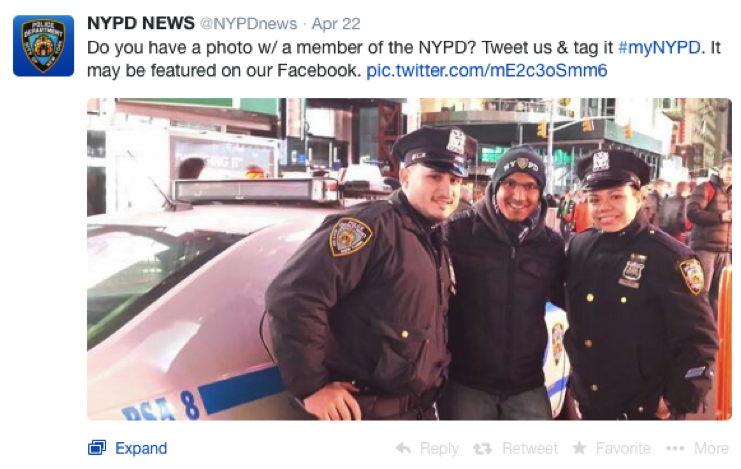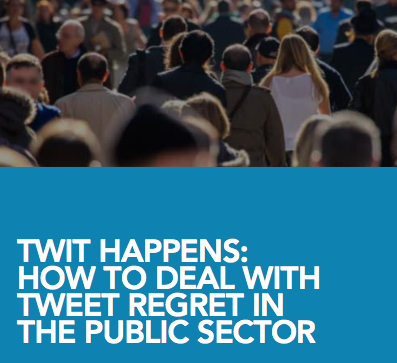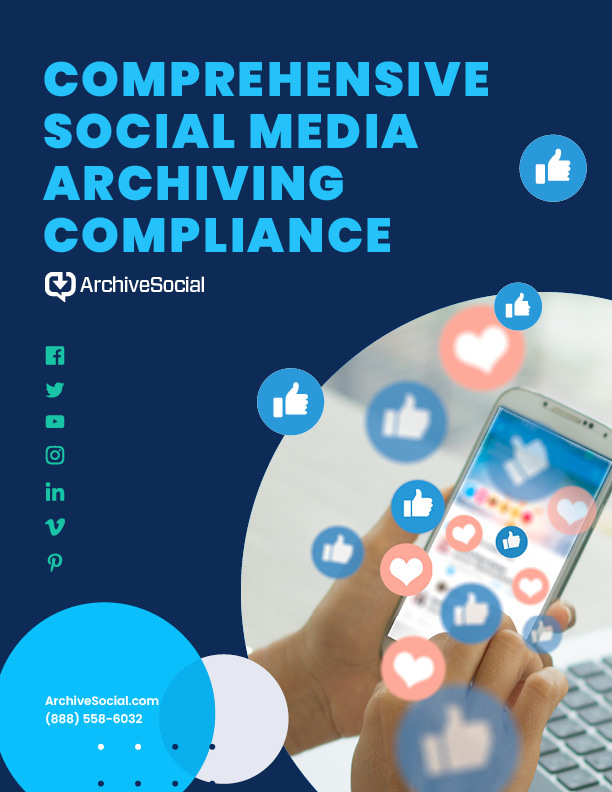
Welcome to the final day of the Social Media Crash Course for Government Communicators!
No matter how prepared you are, mistakes will happen when it comes to social media. These mistakes happen in real time, making it unlikely that the content can be removed before users share or possibly record it. However, that doesn’t mean that it’s impossible to recover from a mistake on social media.
There are some mistakes that you cause, and some that are completely out of your control. In either of these circumstances, the first thing you should do is remain calm. If you approach these situations positively, you can ensure that the benefits of social media continue to outweigh its potential pitfalls for your agency.
In today’s lesson, we’ll highlight a few common mistakes that government entities might make in their use of social media. We’ll also offer some best practices for staying cool, calm, and collected when going viral happens to you.
Common Viral Mistakes
Mistake #1: Hashtags Gone Wild
Hashtags are powerful tools for creating and tracking conversations about everything from planned events to emergency response. However, hashtag conversations can occasionally go haywire.
For example, the New York Police Department attempted to showcase community/police relations through the hashtag #myNYPD. The department encouraged their followers to tweet the hashtag along with a picture of themselves with a police officer. Unfortunately, many Twitter users quickly responded by sharing photos of alleged police brutality and these negative images went viral.
Although they received significant criticism, former New York Police Commissioner Bill Bratton made it clear that he “welcome[d] the attention” because it allowed the department to receive feedback and have an open conversation about its public perception. He also pointed out that the negative photos were largely “old news.”
As seen in this case, sometimes the best way to deal with an unexpected reaction to a marketing campaign is to first accept the reaction. Then, you can decide if it makes sense to suspend the campaign, or even embrace the conversation to potentially steer it in a more positive direction. Rather than try to ignore negative fallout, you can acknowledge it publicly and use the opportunity to emphasize the continuous improvement of your organization.
An example of this from the private sector was IBM’s social media campaign geared towards women in technology. They created the #HackAHairDryer campaign to encourage women in STEM to redesign a hair dryer and share their work on the company’s website. The hashtag went viral nearly two months after the campaign launched, when many women in science and technology careers began to react negatively by claiming that it was sexist and reinforced gender stereotypes. In response, IBM apologized by tweeting, “This was part of a larger campaign to promote STEM careers. It missed the mark and we apologize. It is being discontinued.”
In situations involving a misunderstanding, it’s critical to provide both a genuine apology and a clarification of the intent of the original message. IBM responded in exactly such a manner. Apologizing via Twitter was also a smart move because it helped address the misunderstanding exactly where it originated.
You can’t predict how your public will respond to your posts, but that shouldn’t scare you from participating on social media. Even at its worst, a hashtag fail can be an opportunity to further humanize your agency and how you respond can win over detractors.
Mistake #2: Failing to Communicate to Citizens
What happens when government communicators make the mistake of not participating in the social media conversation?
Public agencies should be leading the discussion with citizens and providing reliable information, especially in times of crisis. Failing to do so leaves concerned residents at the mercy of rumor mills and fear mongers.
For instance, during the swine flu outbreak in 2009, rumors started flying on Twitter regarding germ warfare and contaminated meat. Instead of stepping in to squash these rumors, government health organizations stayed quiet. Although this hesitancy could be somewhat understandable during the early days of social media, the Centers for Disease Control and Prevention (CDC) and World Health Organization (WHO) were still criticized for not doing enough to combat the spread of false information. These rumors created unnecessary panic among the general public.
By the time a failure to communicate becomes obvious, it might be too late to recover. Health organizations should have released statements at the start of the epidemic, and continually updated with the latest developments. To their credit, the CDC was issuing official status updates and action plans regarding the disease. However, the public may have been better served if the CDC and others had taken a more proactive approach by replying to tweets and dispelling false information.
If a high profile situation like this has shaken public confidence in your organization, it is worthwhile to evaluate the situation and create an action plan for the future. In fact, using social media to share your action plan is a good way to reinforce your commitment to communicating more effectively.
For an excellent example of proactively using social to keep citizens informed during a disaster, take a look at the communication response to the Oso mudslide, which you might remember from lesson three.
To learn about other common mistakes that government communicators make on social media, download our guide “Twit Happens: How to Deal with Tweet Regret in the Public Sector”.
How to Respond
Now that we’ve looked at some ways that going viral can happen, let’s cover what to do next.
The South Daytona Police Department fell victim to viral attention when a non-resident posted a controversial image depicting animal abuse on her public Facebook wall over a holiday weekend. Facebook users mistakenly believed that the poster lived in the area, and made 13,000 posts and comments about the incident. Prior to this, the department had a small social media presence, but this situation thrust them onto the national media stage and under pressure to respond quickly to requests for information. After successfully managing this incident, the department developed tips that can help other government agencies better prepare for going viral.
Tip #1: Make crisis media response part of your disaster plan.
Going viral will happen to your agency eventually. The best thing to do is plan for the unexpected so that you can react with a cool head. To do this, social media needs to be a key component of your crisis communication strategy. You should clearly identify communicator roles and responsibilities so there is no confusion when a situation unfolds and you can respond without hesitation.
Tip #2: Inform employees immediately so they know what’s happening.
When a viral event occurs, communicate with your employees about the situation as quickly as possible. Whether employees are on the communications team or not, they are unofficial representatives of your organization and should be up-to-date. You could even give customer-facing employees sample talking points to keep responses consistent across all communication platforms. This tactic was critical in South Daytona as the viral content generated one phone call per minute at the peak of the crisis.
Tip #3: Post frequent updates on the situation.
Viral events can create confusion that interferes with your official messaging. In the absence of official updates, rumors and false information can spread and gain traction quickly. But, by participating in the conversation you can help steer the flow of information. Because of this, it’s vital to post frequently across all social media platforms to inform the public and build trust as the reliable source for updates.
For more best practices inspired by the South Daytona viral incident, you can read our tip sheet “7 Tips for When Social Goes Sideways”.
Although you can’t prepare for every viral situation, having the right tools in place will give you a head start in your response. The best solution when social goes sideways is to have a comprehensive archive of all your social media records to ensure you are protected.
Congratulations, you’re now a social media pro!
Be sure to share this course with your colleagues. And check your inbox for some continuing education resources to keep you at the top of your #socialgov game!
Want more government social media knowledge right now? Check out all of our free resources for public agencies. And if you’re curious about ArchiveSocial’s social media archiving platform, start your free trial today.
We’d also like to invite you to contribute to the growing body of knowledge for government communicators by joining our new Facebook group: #GovClub. We created this space for public agency employees to discuss tips and strategies for communicating on social media. We can’t wait to see you there!





